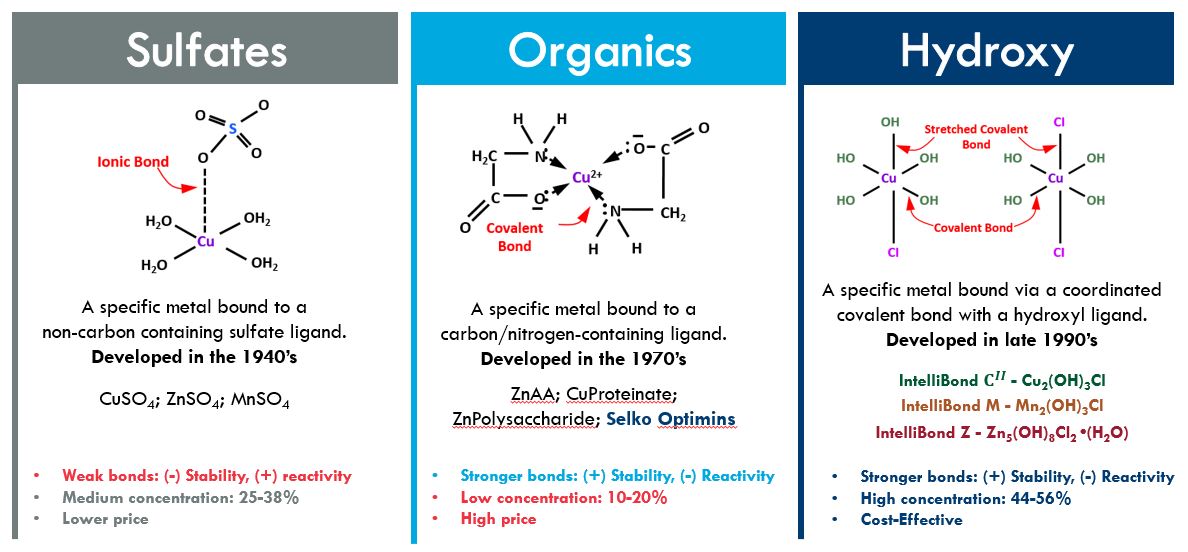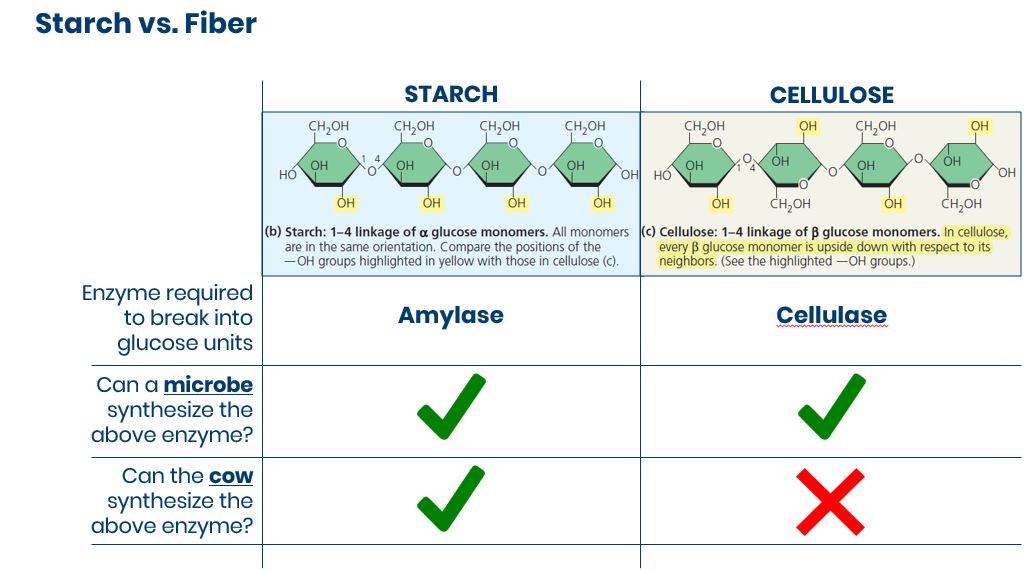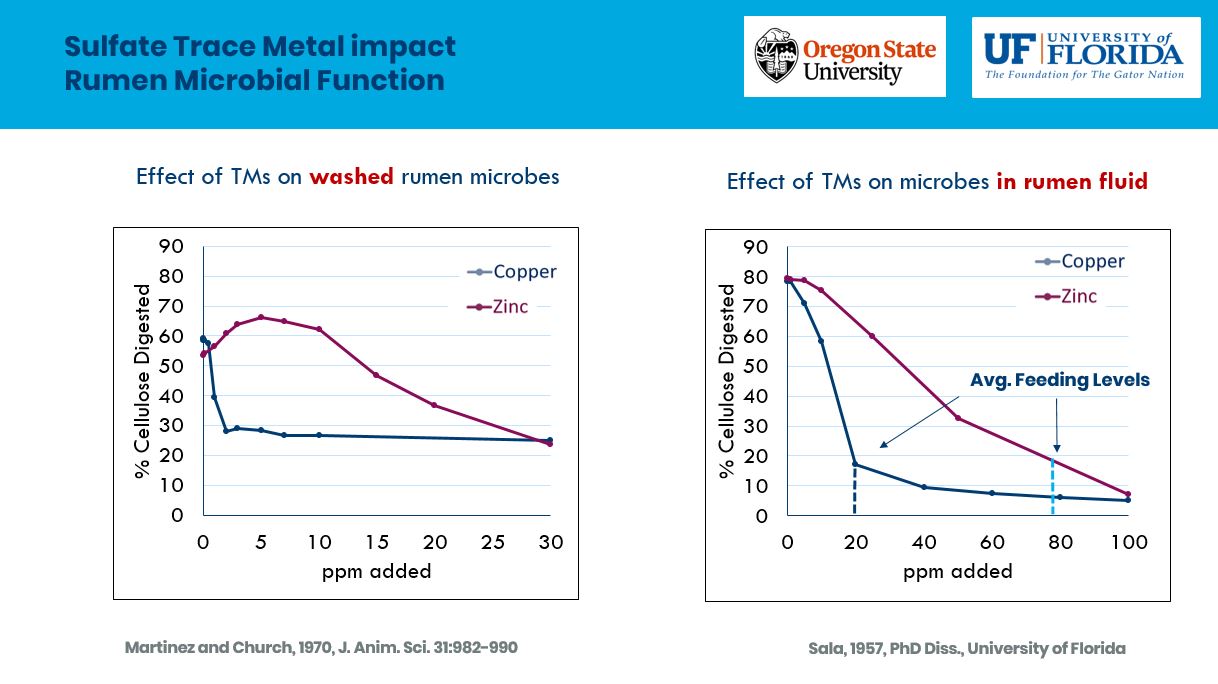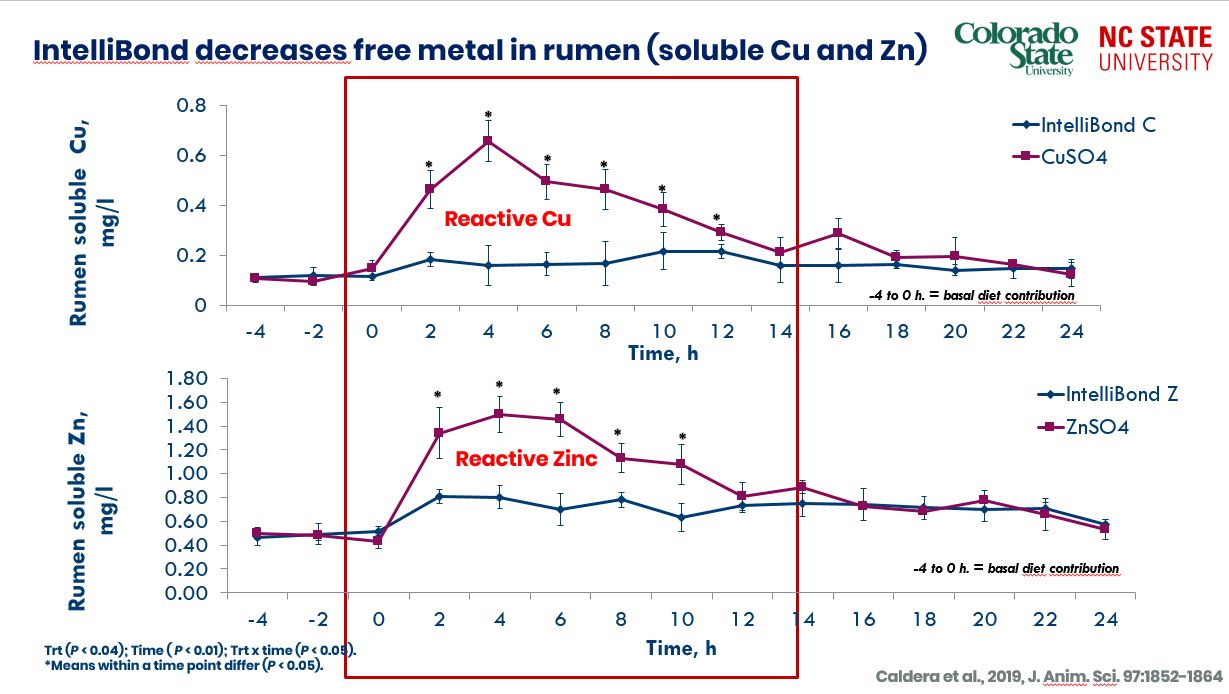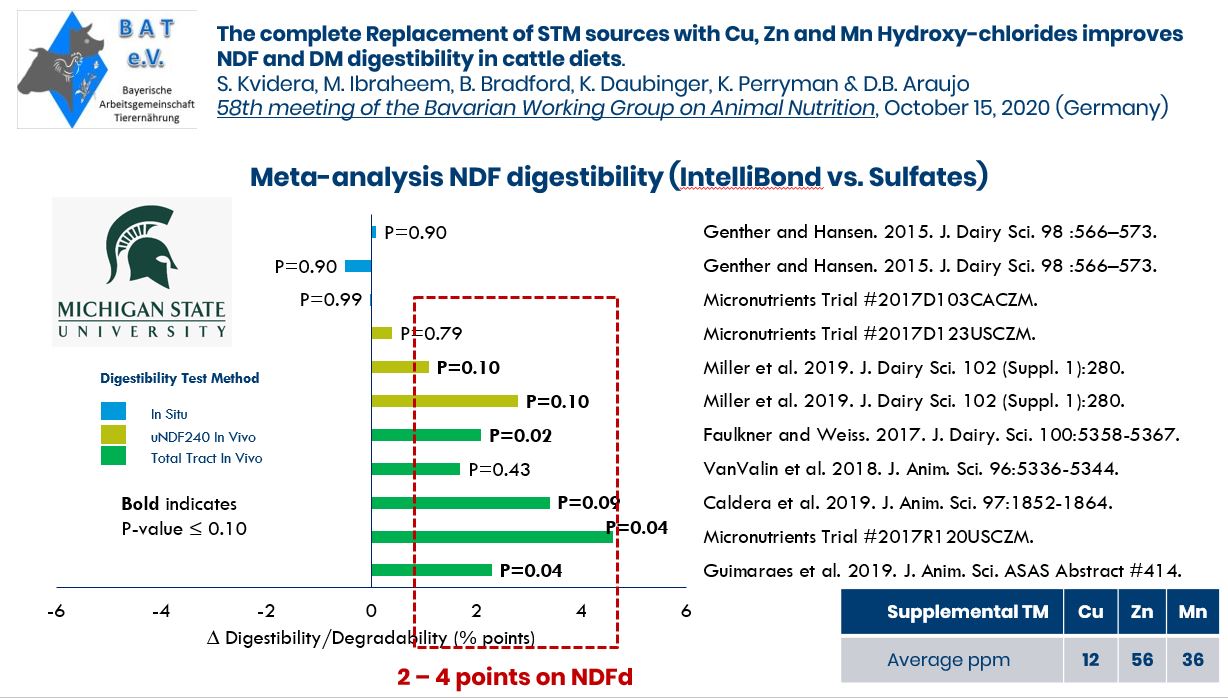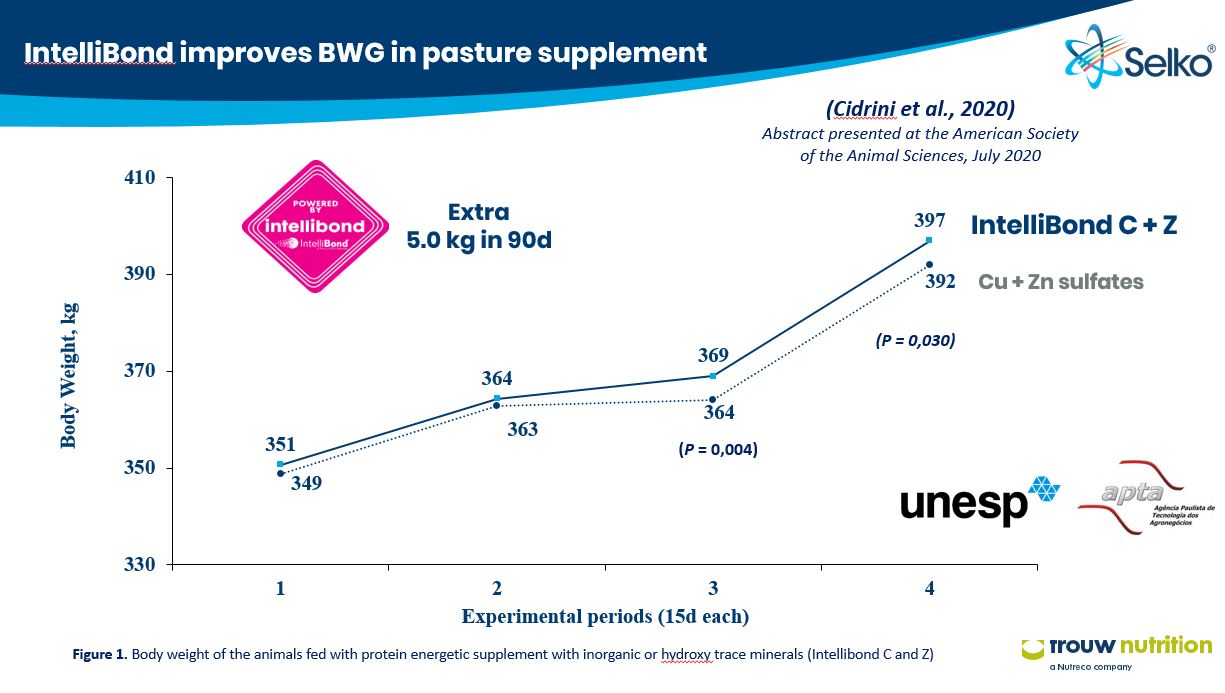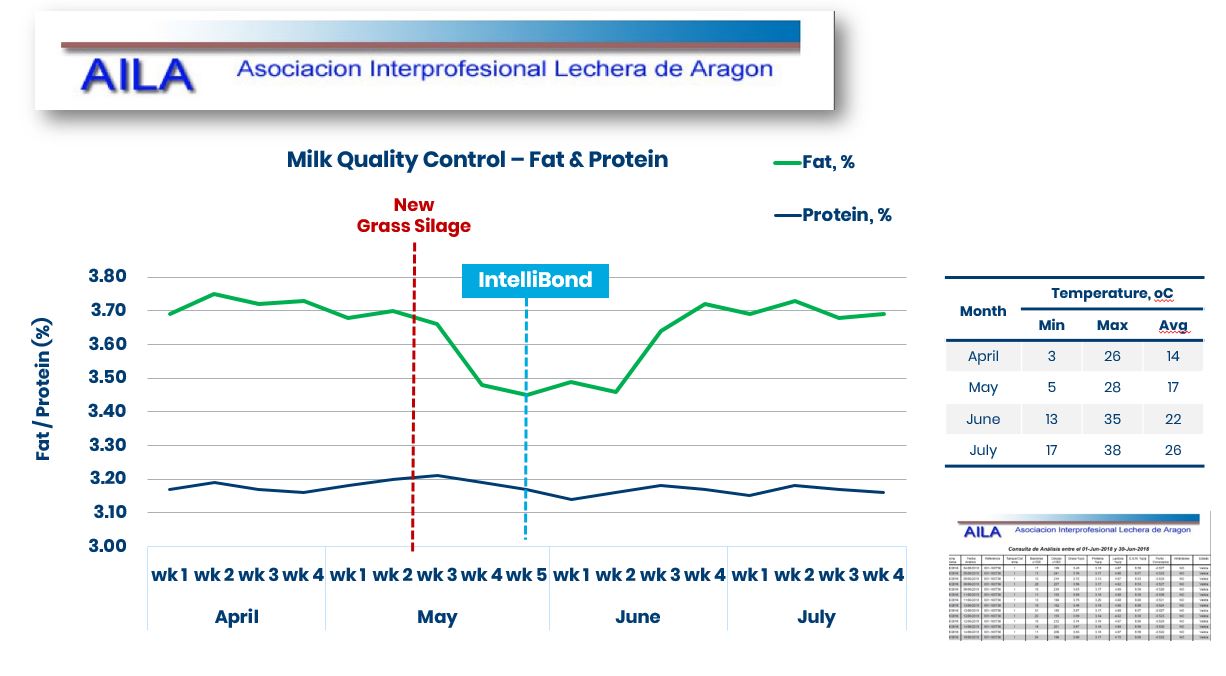



Mineral source and its influence on fiber digestibility, milk performance and body weight gain
Trouw Nutrition, Nutreco’s animal nutrition division, is sharing findings from Universities/Research centers and studies conducted on commercial farms evaluating the influence of sulfate-based and hydroxychloride trace minerals on beef and dairy cattle digestibility of neutral detergent fiber, writes Davi Brito De Araujo, Trace Mineral Programme Manager, Trouw Nutrition.Trace mineral overview
Since the practice of supplementing livestock diets with trace minerals started in the beginning of the 20th century, the forms of trace minerals available have shifted and improved. Newer mineral forms – like organic and hydroxychloride trace minerals – provide more stability, homogeneity and bioavailability than former inorganics forms, such as sulfates and oxides.
As organic trace minerals are much lower in metal concentration and are more expensive, these forms are not considered cost-effective when it comes to complete replacement of traditional trace mineral inorganic sources in supplements and diets. This scenario only changed more recently, when hydroxychloride-based trace minerals were introduced, offering more stability, featuring higher mineral concentration and being more cost-effective than organic minerals.
Looking at the structure of mineral source, both organic and hydroxychloride trace minerals have a chemical structure that uses covalent bonds, instead of the ionic bonds found in sulfate-based minerals. Covalent bonds are stronger and don’t dissolve in the presence of moisture or water the way ionic bonds will. Stronger bonds make trace minerals less reactive to other elements within a feed, and more available to the animal.
Figure 1: Trace mineral stability is based on the type of bond – ionic or covalent. Sulfate-based minerals have ionic bonds, which dissolve in water meaning minerals may dissociate early and reactive with other nutrients in a feed or microbes in the rumen.
To put it another way – weak bonds in trace minerals means minerals are more soluble and more reactive. Higher reactivity in trace minerals leads to increased antagonism with other metals, several dietary elements and oxidation along with reduced stability, absorption, digestibility and performance.
Connecting mineral use and digestibility
One consideration about the use of supplemental trace minerals with beef and dairy cattle is the potential for a reaction between the microbial population in the rumen and the antimicrobial properties of some trace minerals like copper and zinc sulfate. Copper sulfate, for example, is used both on-farm and in hospitals to control pathogenic bacteria. However, ruminal microbes play an important role in the digestion of neutral detergent fiber (NDF), which supports production of volatile fatty acids (VFA) and provide energy to the animal. This negative interaction between sulfate-based minerals and bacteria has raised questions of why sulfate-based minerals are also used in diets because of the important role ruminal bacteria play.
There are multiple types of carbohydrate-based ingredients in cattle diets, often these are divided into non-structural carbohydrates and structural carbohydrates, the last often called fiber.
Figure 2: The difference in structure between starch and fibrous feed ingredients highlights the role of ruminal microbe function when degrading fibrous dietary elements.
Fibrous feed ingredients have tough cell walls comprised of cellulose, lignin and sometimes hemicellulose. While cows are able to synthesize the enzyme amylase to help digest starchy feed ingredients, they do not directly produce cellulase, which is needed to digest fibrous ingredients. Instead, ruminal microbes produce cellulase providing cows the ability to digest those feed materials. It is important for cows to efficiently digest fibrous feed ingredients because those dietary components help generate VFAs like acetate, propionate and butyrate. Volatile fatty acids provide about 70% of the cow’s energy, which can be used for growth, production and reproduction.
Researching ruminal function – looking at zinc source
In a study done at North Carolina State University 120 steers were given one of five diets – a control with no supplemental zinc, diets with 30 or 90ppm zinc sulfate, or 30 or 90ppm hydroxychloride zinc1. Ruminal fluid was collected two hours post-feeding and checked for total VFA amounts. The highest levels were found in steers eating diets with hydroxychloride zinc at 90ppm, however, steer on both hydroxychloride-supplemented diets produced higher levels of VFAs compared to animals receiving the sulfate trace mineral.
The study’s findings were supported by research done in the 1970s examining the influence of supplemental copper and zinc on ruminal digestion of cellulose, in addition to an earlier project done at the University of Florida2,3. Both studies demonstrated the negative influence that zinc sulfate and copper sulfate can have on ruminal digestion of fiber.
Figure 3: Historical studies looking at microbial function in the rumen highlighted the counterproductive nature of the interaction between sulfate minerals and washed microbes and microbes in ruminal fluid.
In a more recent trial done at Colorado State University and North Carolina State University, eight steers were given diets with no supplemental zinc, copper or manganese and implanted with a ruminal bolus that provided 20ppm copper, 60 ppm zinc and 40 ppm manganese from either sulfate-based or hydroxychloride-based trace minerals4. Ruminal fluid was collected every two hours and examined for levels of soluble zinc, copper and manganese. Higher levels of free or soluble copper and zinc were found in the ruminal fluid of steer with the sulfate bolus, meaning more metal was available to attack ruminal microbes and antagonize other elements within the digesta.
Figure 4: Using a stable trace mineral in cattle diets means less metal is free in the rumen and able to reactive with the microbial population and elements within the digesta.
Tracking NDF digestibility
Researchers at Ohio State University examined the total digestibility of NDF in dairy cows based on the type of mineral supplement added to cow diets5. In the feeding trial 18 cows were given either a by-product or forage-based diet and assigned to one of two mineral sequences – 10ppm copper, 35ppm zinc and 33ppm manganese from sulfate then hydroxychloride minerals or hydroxychloride then sulfate minerals – following a 16-day-period with no supplementation. Following eight days of supplementation, cow waste was collected and assessed. Researchers found that compared to results from feeding sulfate-based minerals, use of the hydroxychloride trace minerals improved NDF digestibility by an average of 2 points for both types of diet.
Similarly, a metanalysis of trials exploring the influence of trace mineral type on feed digestibility was completed in 20206. The project focused on NDF digestibility when either hydroxychloride or sulfate-based minerals were used.
Figure 5: Meta-analysis results demonstrate improved NDF and dry matter digestion when IntelliBond trace minerals replace sulfate-based minerals.
Overall, the analysis found that the use of sulfate-based trace minerals lowered the total tract digestibility of NDF by 3-4 points compared to the use of hydroxychloride trace minerals. Researchers at Michigan State University calculated that changing NDF digestibility by 1 point – either up or down – alters milk production by about .25kg of 4% fat-corrected milk7. This determination means losing 3 points of digestibility reduces a cow’s production by about ¾ kilogram of milk or about €0.25, based on average milk prices.
NDF digestibility and performance
A research project focused specifically on how the relationship between total-tract digestibility and milk production is influenced by trace mineral source was done at a Trouw Nutrition research facility8. In the trial, 52 cows received 15ppm copper, 40ppm zinc and 20ppm manganese through one of four mineral supplements – 100% sulfate minerals, 100% hydroxychloride minerals, 70% sulfate and 30% organic trace minerals, or 70% hydroxychloride and 30% organic trace minerals for a 21-day period. Cows were rotated through all four of the supplementation options during the study. The researchers found that using the hydroxychloride-based minerals improved both milk yield and milk fat content compared to results from the sulfate supplements, regardless of organic mineral inclusion. The improvements average about 51g more milk fat per day, an additional 1.1kg milk per day and overall NDF digestibility increased by about .8 points.
Building off of the understanding that using hydroxychloride trace minerals can improve NDF digestibility and milk production for dairy cows, a set of trials examined use of differing trace mineral sources with bulls on a low-quality forage diet9. During the dry, winter season in Brazil, cattle on forage can have low weight gain or even lose weight. During the trial, two groups of bull – canulated and non-canulated – were given a high protein supplement with either sulfate-based or hydroxychloride-based copper and zinc.
Ruminal fluid from the 8 canulated bulls was examined for pH, VFAs, ammonia, microbial presence and how well dry matter and NDF degraded. Additionally, 120 bulls were checked every 30 days for feed intake and body weight. At the end of the trial, final body weight was noted, average daily gain and productivity per hectare were calculated and a liver biopsy was done to check mineral status.
Results from the trial indicate that bulls receiving the hydroxychloride trace minerals added an extra 5kgs of body weight in 90 days. These results suggest that the additional energy provided from improved digestion not only can support additional milk production but can also help with animal weight gain.
Figure 6: In addition to supporting milk production, improving cattle digestion by using a more stable trace mineral also can improve weight gain in beef cattle.
On-farm case study
In addition to the controlled trials, an on-farm assessment was made looking at the potential implications of changing diets to only use hydroxychloride-based trace minerals with dairy cows.
A farm raising 800 lactating dairy cows saw an average milk production of 36 liters with a fat content of 3.7% and an average protein level of 3.2%. The farm fed a ration that blended several silages with straw, compound feed and supplemental minerals. However, when a new grass silage with different protein, ash, moisture and ADF levels was introduced, milk fat amounts started to decline. In response, the mineral supplement cows received was altered to remove sulfate-based minerals and only include hydroxychloride trace minerals. Following an adaptation period, milk fat levels rebounded even though cows were also experiencing high-heat conditions.
Figure 7: Even during warm conditions, dairy cows receiving only hydroxychloride trace minerals show improved digestion and the potential for additional milk solid production.
Conclusion
Results from the feeding trials and digestibility studies indicate that not all trace mineral sources behave the same way or provide the same benefits to beef and dairy animals. Selecting a trace mineral, like IntelliBond hydroxychloride-based trace minerals, with stronger covalent bonds provides a more stable trace mineral source that is less likely to negatively interact with ruminal microbes and inhibit the digestive process.
It is important for producers to support ruminal microbial populations because they are necessary to help cows gain energy from fibrous ingredients, says Pablo León, DVM and ruminant product lead - Iberia with Trouw Nutrition. He added, “NFD is an analytic measure of fiber in feeds. NFD is made up of lignin, cellulose and hemicellulose and rumen microbes obviously digest NDF.”
“Free copper and zinc … reduce the digestion of cellulose by rumen microbes,” he said. “We can see effectively how free copper and zinc, even if they [are] not in high amount in the composition, can reduce dramatically the fiber digestibility or the NDF digestibility.”
A more stable mineral source, which does not shed free metals into the rumen can improve ruminal digestibility of NDF and provide more energy to the cow. Better digestibility of NFD, can translate into more milk and more milk solids. Less soluble trace minerals also can be a tool for nutritionists seeking to optimize diets and provide better weight gain.
TheCattleSite News Desk

